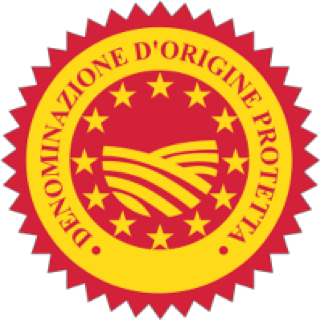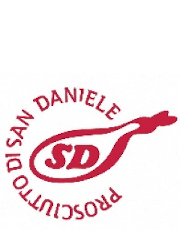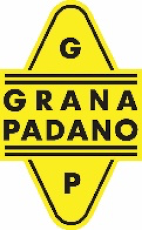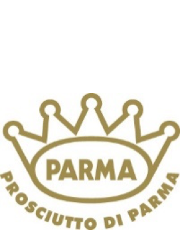It’s likely that at some point in your life, you’ve eaten a slice of prosciutto or enjoyed the mellow flavour of Grana Padano cheese. If you’re not aware of the premium versions of these Protected Designation of Origin products, you will begin to see more of them in many retail stores across the country that carry traditional, authentic Italian products.
The producers of Prosciutto di San Daniele PDO, Grana Padano PDO and Prosciutto di Parma PDO are the focus of an exciting joint promotional campaign that seeks not only to raise awareness about these unique foods among Canadian consumers, but also to emphasize the importance of quality, authenticity and tradition.
These Italian products showcase a passion for the Italian way of life that includes incomparably delicious, natural food that’s never mass-produced or processed. These two types of prosciutto and cheese are certified PDO (Protected Designation of Origin) products, that offer quality and authenticity, made according to traditional methods in specific geographic regions. They’re each created using traditional techniques that have set the standard of culinary excellence for generations.
Importance of a PDO (“Protected Designation of Origin”)
PDO (or the acronym in Italian, DOP) is the European Union’s Protected Designation of Origin certification system. A PDO logo guarantees high quality, authenticity and traceability that ensures certain production specifications, including:
- Clear boundaries of the geographical area of origin of both the products and the raw materials
- Production methods following the centuries-old recipes and techniques – methods that have proven over time to be safe, effective, and the most flavourful
- Clear labels indicating where and when the products were produced
- Quality and authenticity certification by accredited certifying bodies
The PDO system helps consumers distinguish these foods from their imitators. Prosciutto di San Daniele, Grana Padano and Prosciutto di Parma are protected by Consortiums which control each step of production and help to promote and protect them.

Prosciutto di San Daniele
- San Daniele is situated in the center of Friuli Venezia Giulia in the so-called “Morainic Amphitheatre” – in the foothills of the Pre-alps, almost 827 feet above sea level.
- The Celts who settled here 2,000 years ago were the first to preserve pig thighs with the help of salt and over the centuries prosciutto makers perfected a natural system relying on air circulation and wise use of salt, without any additives.
- Although, innovations in technology and business practices have been introduced, the Consorzio follows tradition in the actual making of the prosciutto.
- Upon arrival at the Prosciutto di San Daniele curing facility, processing begins with chilling and trimming and skilled application of sea salt to the pork thighs.
- Traditionally, the prosciutto is pressed into an elegant guitar shape that, together with the intact trotter, gives Prosciutto di San Daniele a distinctive appearance.
- Several other steps take place, but the largest part of the more than 13-month process consists of natural air curing.
|

Grana Padano
- Grana Padano has been a part of Italy’s proud gastronomic heritage for nearly 1,000 years. Benedictine monks found a clever solution to preserve surplus milk by creating a hard cheese which could withstand the test of time. Due to its grainy texture, it soon became known as “Grana.”
- In 1954, it was officially named “Grana Padano,” with “Padano” identifying the area of Production, the Pianura Padana (Po River Valley) in Northern Italy.
- A staple in Italian cuisine, it has become the world’s best-selling PDO cheese. It has a fine grainy structure and a mellow, tasty flavour that’s never overpowering.
- It can be found aged between nine months to over 24 months.
- Grana Padano possesses unique nutritional features such as quality proteins, vitamins and mineral salts, especially calcium.
- It is lactose free due to the characteristics of the production method and the long aging process.
|

Prosciutto di Parma
- Prosciutto di Parma is a 100% all-natural, gluten-free product made with only four ingredients: pork, sea salt, air and time.
- It is completely free of preservatives, additives and hormones.
- By law, this ham can be cured only in the gently rolling countryside near Parma, Italy, in the foothills of the Apennines.
- Traditionally, producers opened their windows to capture the aromatic breezes needed to air cure the hams.
- To qualify for Parma Ham production, specially bred pigs must be born and raised according to strict guidelines on approved farms in 10 regions of northern and central Italy.
- At the curing facilities, or ‘prosciuttifci,’ highly experienced “salt masters” apply just the right amount of sea salt to produce a ham with the desired savory-sweet flavour profile.
- A curing period of at least 400 days ensures that customers will be rewarded with perfectly cured Parma Ham every time.
|
It’s important for consumers to look for the above logos in stores to ensure the purchase of authentic and quality Italian products.
To find more information and recipe ideas with these products, visit www.iconsofeuropeantaste.eu






